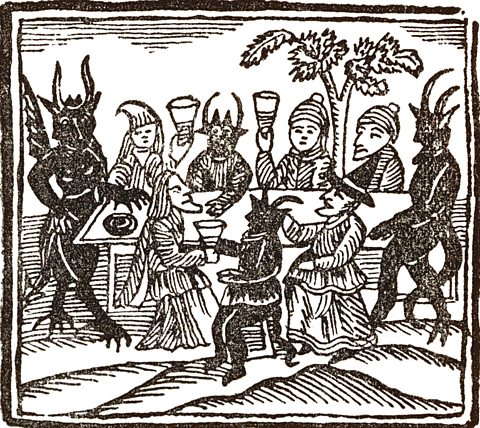Witches on trial
During a 200 year period, nearly 4,000 Scots were put on trial on charges of witchcraft.
It is estimated that two thirds of those accused were executed. 84 percent of the people accused were women.
So what happened to those people who were accused of being witches?
Was witchcraft a crime?
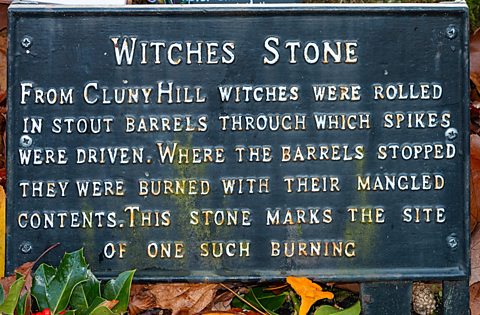 Image source, ALAMY
Image source, ALAMYIn Scotland until the 1500s, witchcraft was seen as a religious rather than a criminal issue. Anyone accused of witchcraft was usually dealt with in local church courts.
In 1563, that changed. The Scottish Witchcraft Act became law and, from that point, witchcraft became a crime that could be punished by death.
From that point on in Scotland witchcraft cases were taken more seriously and prosecuted by the state.
 Image source, ALAMY
Image source, ALAMYHow were witches accused?
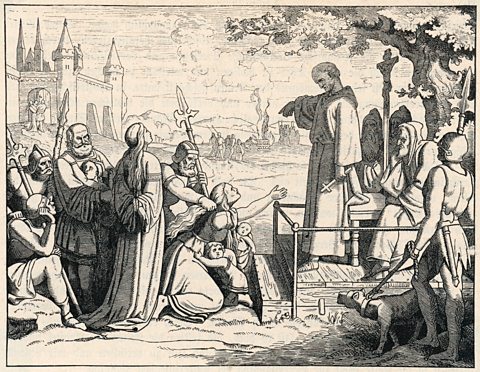 Image source, ALAMY
Image source, ALAMYIt didn't take too much to be accused of witchcraft.
In difficult times, such as years when crops failed or disease was widespread, communities would often look for supernatural causes. Witches were seen as one such supernatural cause.
Anyone who had become ill, or suffered a sudden misfortune might look for a magical reason among the people around them. Accusations of witchcraft usually came from within the suspect's community. Often they involved a dispute or argument, after which one of the people involved suffered some ill health or misfortune.
Often people accused of witchcraft confessed under torture that they were guilty. Some also implicated other people, accusing them of also being witches.
Sometimes these were family members or friends. In some cases, it seems likely that officials were suggesting names of people to accuse.
Euphame MacCalzean
In 1590, David Seton, bailie of Tranent accused his servant Geillis Duncan of witchcraft, starting the North Berwick witch hunt.
Under torture, Geillis Duncan named several other people as being witches, including Euphame MacCalzean.
Back in 1584, Euphame and her husband Partick had inherited around £2,000 from his mother. Patrick's sister and her husband only inherited around £400.
Patrick's sister's husband was David Seton. Was it just coincidence that his richer sister-in-law was named as a witch?
Margaret Aitken
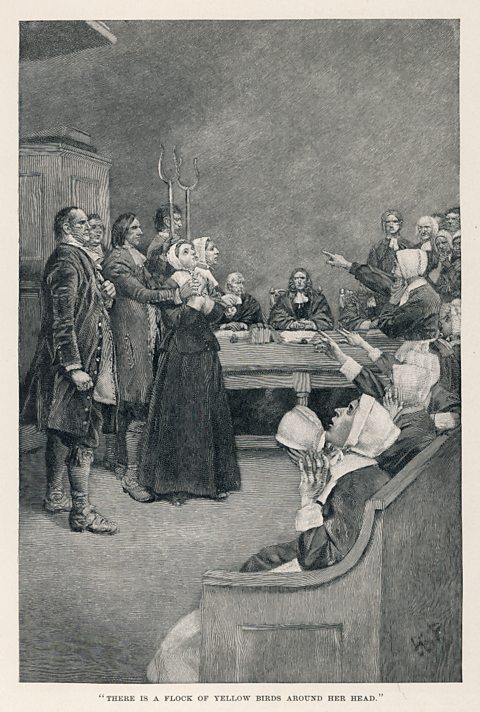 Image source, ALAMY
Image source, ALAMYIn 1597, under the threat of extreme torture, Margaret Aitken from Balwearie, Kirkcaldy, confessed to being a witch and declared that she could tell whether others were witches by looking into their eyes.
It is thought her testimony led to many deaths, before she was caught out – some of those she declared guilty were brought back to her the following day in different clothes, and she said they were innocent.
Later, Margaret admitted making it up and was executed.
 Image source, ALAMY
Image source, ALAMYHow was evidence of witchcraft obtained?
Confession
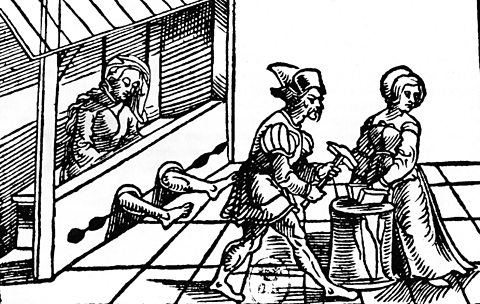 Image source, ALAMY
Image source, ALAMYThere was often little evidence against those arrested for witchcraft, beyond rumour and allegations that were hard to prove.
This meant getting a suspect to confess during questioning was important for the trial.
Torture
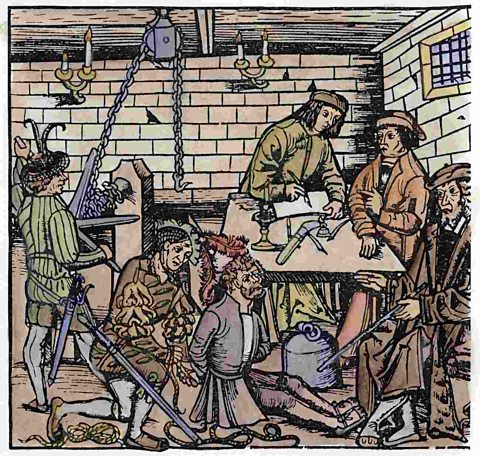 Image source, ALAMY
Image source, ALAMYIn Scotland, torture was only allowed with special permission from the Privy Council, which was only granted twice (in 1591 and 1610).
Nevertheless, torture was often used illegally to get confessions from the accused, or to generate proof against them. Under torture, the accused might confess to performing witchcraft themselves. They might also provide names of other witches, who could then also be accused and brought for questioning.
 Image source, ALAMY
Image source, ALAMYLilias Adie
In 1704, Lilias Adie, from Torryburn in Fife, was accused of being a witch. Lilias confessed to being witch, but despite being tortured, she resisted naming other witches. She claimed that witches she had met with wore masks, and she could not identify them.
Lilias Adie died before she could be put on trial. It is possible that her death was a result of the torture she was subjected to.
'Waking the witch'
The most common technique used to break an alleged witch was called 'waking the witch'.
This involved keeping the suspect awake for long periods, even days.
This sleep deprivation led to confusion or desperation and made a confession of witchcraft easier to extract from an exhausted suspect.
Physical evidence
A witch did not have to confess for there to be evidence of their crime.
Entering into a pact with the Devil, and given away their soul, were thought to result in physical changes that would reveal a witch's guilt.
The Devil's Mark
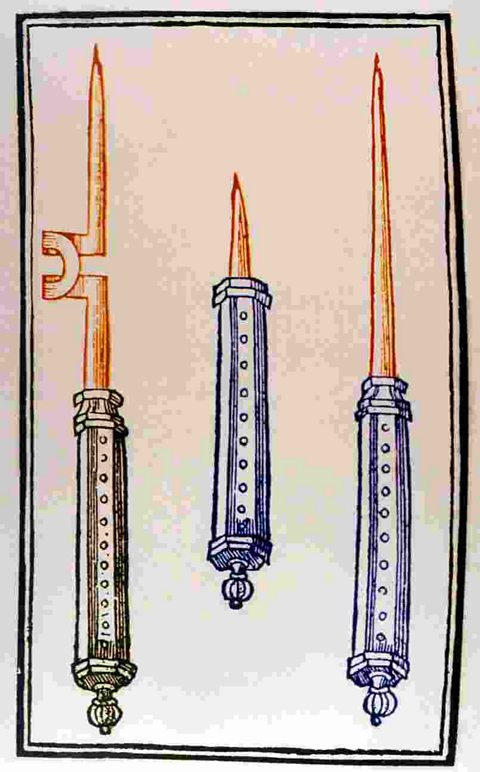 Image source, ALAMY
Image source, ALAMYIt was thought that when a witch pledged herself to the Devil, he marked them with a sign of their loyalty. This Devil’s Mark was an area on a witch's bodies that would not respond to pain.
Witchcraft investigators used sharp tools to prick the skin of suspected witches to see if the Devil’s Mark could be found. Some people worked as professional witch prickers and would travel around Scotland, and parts of Northern England, hiring themselves out to examine suspects.
This was painful and highly distressing, and, although not originally intended as a form of torture, it may have been used as torture to bring about a confession.
Even finding a birth mark or a mole on the skin could be enough to accuse a person of being a witch.
 Image source, ALAMY
Image source, ALAMY'The swimming test'
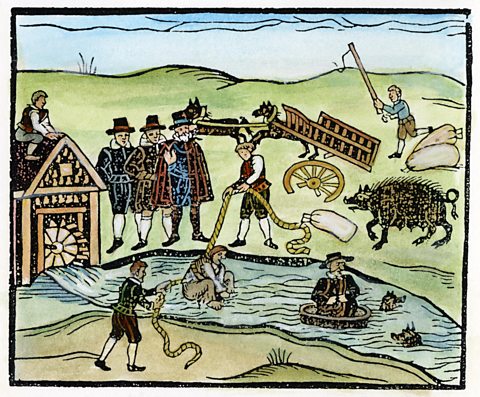 Image source, ALAMY
Image source, ALAMYPerhaps the best known test for witchcraft was the swimming test.
This involved the accused being tied up and thrown in a river or loch.
If they sank, it was a sign that they were not a witch, and rope would be used to haul them out.
Many believed that water was pure, and would reject evil, so if the person floated it was seen as evidence that they were a witch.
King James VI wrote this in his book, Daemonologie:
it appeares that God hath appoynted… that the water shal refuse to receive them in her bosom, that have shaken off them the sacred Water of Baptisme
The swimming test was not widely used in Scotland and is only mentioned as having been used during the 1597 witch trials.
How were witches punished?
 Image source, ALAMY
Image source, ALAMY Image source, ALAMY
Image source, ALAMYAll those found guilty of witchcraft in Scotland by law had to be executed.
This was most commonly done by strangling the alleged witch, and then burning their body.
Destroying a witches body made sure that it could not be brought back to life by the devil, or be used for evil magic. It also meant those found guilty of witchcraft could not receive a Christian burial.
In Scotland, it is estimated that around 2500 people were found guilty of witchcraft and killed in the period between 1563 and 1727.
The majority of these people were women.
 Image source, ALAMY
Image source, ALAMYTest your knowledge
More on Scottish witch trials
Find out more by working through a topic
- count6 of 7

- count7 of 7
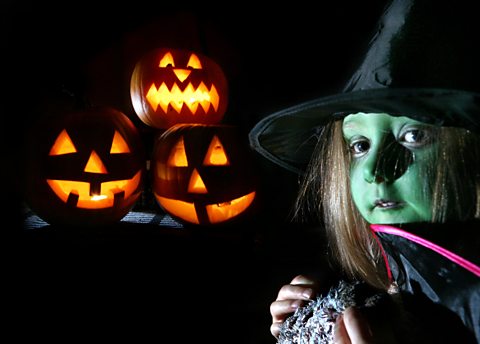
- count1 of 7
